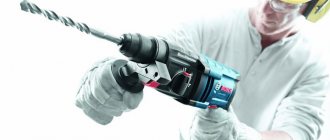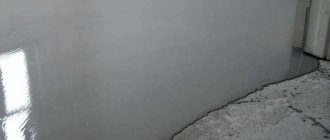As they say, repairs cannot be completed, but can only be temporarily suspended. The holiday season is just around the corner, and at this time many people do not go on vacation at the seaside, but are busy improving their living space. And of course, during the renovation you cannot do without painting work. To do this, you can use brushes, an aerosol spray or a special roller. At the same time, many experts recommend using a roller, since with its help you can apply a fairly thick layer of paint and do it evenly. And even a person who has no experience in painting work can cope with the task.
Choosing a paint roller
Rollers for painting walls are more often used than brushes and sprayers when carrying out paint and varnish work.
To make the right choice among the abundance of paint rollers, you need to consider a lot of factors. It is important to take into account the location of the painting job (inside or outside), the type of paint used, and the desired result. Paint rollers differ in size, type of pile and length. Different models are used for various types of paintwork materials. To choose the right tool, you should take into account all the nuances.
General characteristics
Paint rollers have a common design. The main components are:
- The handle has a different shape. Manufacturers strive for ergonomics, so they improve the structure of the element. The part can be wooden, plastic or rubberized.
- Byugel is a metal element of a curved shape. This is the basis for the painting part.
- The roller with the fur coat is put on the clasp. The roller rotates, resulting in painting.
The last part is removable and therefore cannot be replaced. This allows you to reduce the cost of purchasing painting tools.
Purpose and operating principle of rollers
Painting devices differ in material and type of coat. The purpose of the tool depends on the type of this part:
- Most of the rollers are intended for painting. Their working part is made of a material that absorbs and retains paint for application to the base.
- Textured models have a three-dimensional pattern on the fur coat. Used on plaster to achieve maximum decorative effect. By pressing, the pattern is reprinted onto the surface.
- The roller for the self-leveling floor has a special coat that helps remove air bubbles from the fresh solution.
The operating principle of all types of rollers is similar. By pressing on the working surface and moving the handle, the roller and, accordingly, the coat rotate.
The result of use is the application of a paint coating or pattern to the surface.
Surface preparation
Preparing the surface for painting is a process that is often longer than painting itself, but very important. It is worth following the entire technology, without excluding any stages.
- Remove previous surface coating. Peeling off loose parts of the old paint will lead to a deterioration in the overall appearance of the work and peeling of the new paint. Whitewash or water-based paint can be removed without much difficulty - moisten the surface to be treated generously, then go over it with a spatula. Remove any residue with a damp cloth. Waterproof paint is capricious; to remove it you will have to work with a wire brush.
- Next, you should wet the surface and, after waiting a little, open the windows for a draft. The coating should peel off and can be removed with a spatula. Another way: apply wallpaper glue or paste to the old paint, stick newspapers on it, and let it dry. By removing a layer of paper, you can remove the previous coating along with it. The third method is to remove it with a drill, but then a huge layer of dust on the surface cannot be avoided.
Fastening fur coats
The method of attaching the coats to the roller determines the performance characteristics of the roller:
- Glued method. The fur coat is secured by wrapping the material around a roller treated with glue. The fleecy part is attached with an overlap, which is why the coating is seamless, which facilitates uniform application. The glued method involves a complete replacement of the paint roller, since replacing the coat will not work.
- The hot-melt method involves gluing a fur coat strip onto a heated roller. There are no seams in the coating, so the paintwork is applied evenly. This roller has a long service life.
- Replaceable coats have special plugs responsible for fastening. Such tools can be replaced, which makes the device economical.
It is recommended to choose a tool according to the mounting method, taking into account the scale of the painting work being carried out. To paint large walls, it is better to purchase a paint roller with a replaceable coat. This will allow you to paint the surface with minimal financial costs for the tool.
Advantages
The use of paint rollers greatly simplifies the process of painting large surfaces, allowing you to apply paint mixtures evenly. Other advantages of a roller over brushes include:
- high speed and quality of processing;
- absence of lint on the painted surface;
- the ability to create relief and textured effects;
- a large assortment.
Manufacturers
The construction market offers a lot of options for painting tools and accessories for them. The most popular products are considered to be from the following manufacturers:
- Santool;
- Master Color;
- stayer;
- Matrix;
- Sibrtech;
- Bison
The rollers from these manufacturers have received positive feedback from consumers due to their high technical characteristics. The products of the companies Biber, Topex, Craftool, Sigma, Akor are popular. The products of these brands have fewer reviews, but the quality of the products is high.
Additional tools
To make working with the roller as comfortable as possible, you should acquire additional tools. The most popular of them is the pallet. Nowadays you can even find sets of a pallet and a roller on sale.
Pallet for paint roller
Roller stands and cleaning tools can also be found. The tray is convenient because you can pour a fairly large amount of substance into it, and then evenly saturate the roller with it, rolling it along a special plane.
Return to content
Types of rollers and application
For different conditions, rollers of different types and sizes are selected. When choosing a device, you must carefully study the technical parameters and scope of use.
Universal
This tool is considered the most common. A roller is suitable for painting walls and other substrates with a poorly defined relief. The versatility of the device lies in its compatibility with various paints and varnishes: paints, enamels, varnishes. Applying dyes with such a roller is comfortable, which makes it popular among non-professional craftsmen.
For radiators
This roller with a thin long handle is used for painting pipes and radiators. Its design differs from standard clasp options, making it convenient for painting hard-to-reach areas. The size of the coat itself is smaller than that of other types, which simplifies the work and reduces the waste of paint and varnish when painting.
Facade
The facade roller differs from others in size and the presence of a telescopic handle. It extends, allowing you to process surfaces at any height. Thanks to the increased diameter of the coat, it is possible to reduce the time for painting facade walls. The tool has long bristles, which speeds up painting and makes it more convenient. This roller for painting walls is equipped with a bearing that allows you to regulate the speed of operation.
For corners
This option has a small wheel-shaped roller that allows you to paint corners and hard-to-reach areas. The roller width is small, which helps reduce consumption and ease of use.
Pressing (smooth)
A wall roller, made of rubber or polyurethane, is used to apply adhesive mixtures or remove air bubbles when wallpapering. The stitching tool is equipped with a cone- or barrel-shaped roller. There are tools directly for wallpaper and for joints.
Needle
This type of construction tool can have soft or hard spikes. Rollers with soft needles are used when pouring floors. In this process, it is important to remove air bubbles from the coating, which a needle tool does an excellent job of. Devices with solid spikes are used when working with drywall. By piercing the material, it is possible to deeply saturate it with moisture and give it the required shape.
Textured
The device is used to obtain original decor. The structural roller is used for various purposes. There is a tool designed for applying paint. There are also varieties for working with plastered bases. The scope of use depends on the choice of the type of attachment for the structural roller. For plastered bases, a wooden textured roller is often used. Sponge, leather and rubber types are suitable for working with smooth substrates. When pressing on the working surface, the pattern is imprinted.
Paneled (patterned)
A type of textured tool used to apply paneling.
The roller is less common than others. Options available for direct contact with paint. There are also varieties with a refill function.
Marking
When choosing a device, pay attention to its labeling. Domestic rollers are marked according to GOST 10831. The first letter “B” says that this is a roller. And under the second letter hides the material of the fur coat:
- M – fur;
- MP – fur for painting floors;
- MU – fur for processing corners;
- P – with polyurethane foam.
Imported instruments have a much greater gradation. Their description may contain information about dimensions and material (PE - polyester, PC - polyacrylic, etc.).
Criterias of choice
When buying a roller, you should take into account the dimensions of the working surface, the material of manufacture, and the length of the fleecy part. It is necessary to select a device specifically for the paint and varnish material in order to eliminate poor-quality painting and excessive consumption of paints and varnishes.
Dimensions
There are 3 groups of instruments based on size:
- A mini roller is used when painting surfaces of small areas or hard-to-reach places. Its width does not exceed 15 cm, and its diameter is less than 15 mm.
- Midi rollers have a standard size. This is a universal option suitable for most cases. Suitable for painting and wallpapering. The width of the working part is up to 25 cm, diameter is 5-9 cm.
- Professionals often use maxi rollers. This type of tool allows you to paint large surfaces. When carrying out exterior painting work on façade walls, such a roller is indispensable. Requires skills to perform quality work. The width of the roller is more than 25 cm, the diameter is more than 8 cm.
The tools differ in the diameter of the rod and the length of the handle. These parameters affect the weight of the roller. The weight of the working tool affects the ease of use.
Foam rubber
Foam rubber models are designed to work with water-based paints and varnishes. Foam rubber has the ability to restore its shape, which is important when working with dyes. At the same time, the fur coat absorbs a lot of paint and varnish, which increases costs. When used, air bubbles remain on the surface, causing the coating to look uneven. Professionals do not recommend using a foam roller for painting. They are convenient and effective in applying primer.
Velours
Velor models allow you to apply paint with the least loss, since the pile holds the paintwork well and does not splash it. A roller is used when working with alkyd, oil and water-dispersed compositions. It is solvent resistant, allowing it to be cleaned and reused. Mostly smooth surfaces are processed with a velor roller.
Fur
Fur options can be made from natural or artificial fur. The latter are more universal because they are suitable for working with any paintwork materials. Natural pile rollers are not recommended for use when working with lime compounds. The characteristics are also affected by the degree of fur dressing. If the finishing is insufficient, lint will remain on the surface.
Polyamide thread
Water-dispersed paints are often worked with polyamide rollers. They are wear resistant. The tool is resistant to chemical attack. Fur coats with long pile are used more often because they are easy to use.
Tips for the novice painter
- Do not use a roller that is too large. On the one hand, this way you will cover a large surface area with one movement, but on the other hand, such a roller is extremely impractical to use. As a result, the surface may turn out to be unevenly painted.
- To avoid drips and achieve a uniform color, thoroughly saturate the tool with paint using a special tray surface. If you don’t have it at hand, you can use a perforated metal sheet. As a last resort, cardboard will do.
- If it becomes necessary to use a tool for a composition whose color is different from the previous one, you should completely get rid of the old composition. First, you need to finish painting the element being processed, and then carefully roll the roller over a sheet of cardboard or plywood. This must be done until the tool stops leaving marks on the surface and all inclusions in its coat disappear. Then you can saturate the roller with new paint and continue working.
- The same product should not be used to transfer different types of paint and varnish compositions onto a plane. Even if the instrument visually looks clean and perfectly washed, it simply may not be suitable for using another substance.
- If painting work occurs intermittently, and there is a need to leave the tool for a while, you should wrap it tightly in a plastic bag and tie it tightly.
- If there is a need for long-term storage of the roller, then it is better to place it in some container of a suitable size, fill it with paint and wrap it tightly in a plastic bag.
Healthy? Save it to your wall! Thank you for like!
Tweet
How to choose a roller for the type of paint
The choice of a paint roller is based not only on ease of use, but also on the compatibility of the material of manufacture with the type of paint and varnish material. Efficiency when working with compositions based on water, drying oil, and polymers depends on this.
Water-based paints and varnishes
There are many painting products on the market for working with water-based compounds. Tools with terry, foam, or polyacrylic coats are used for painting. The recommended device for applying these compositions is polyamide rollers. This is due to the following qualities of polyamide fibers:
- economical consumption;
- effective absorption, which prevents splashing and smudges;
- lack of lint on the painted surface;
- Washable, so the roller can be reused many times.
Rollers with polyamide fiber coats are often used by professionals.
At the same time, the tool is easy to use, thanks to which even inexperienced craftsmen can produce effective coloring.
Solvent based paints
To apply paints and varnishes based on organic solvents, it is recommended to use rollers made of natural fur, since synthetic materials are not always resistant to the chemicals contained in paints.
For two-component compositions, tools made of velor, nylon, and microfiber are used. The disadvantage of such rollers is their high price. In addition, they need to be thoroughly washed with a large amount of solvent after painting is completed, otherwise the device will be unsuitable for the next painting. There are many options for paint rollers on the market.
In order for the coloring result to be ideal, you need to take a responsible approach to choosing a tool, study consumer reviews and technical parameters. With a properly selected device, you can even carry out high-quality and beautiful painting of any surface with your own hands.
Care
You can extend the life of your instrument if you take proper care of it. After applying water-soluble compounds, rinse the roller under running water and wipe the handle dry.
If the painting was done with solvent-borne paints, then the roller will have to be soaked in a solvent and then washed in soapy water. Drying is done in a vertical position to avoid damage to the fur coat.
Quick-drying, odorless paint for interior work - main types, selection tips and benefits of useThe best aerosol paint in cans - main types, application features and advantages of use
The best water-based paint - ranking of the best manufacturers of 2018
A few words about quality
Not only the result, but also the duration of the painting process largely depends on the quality of the roller for painting the ceiling. Therefore, special attention should be paid to quality. You shouldn't skimp on this. Otherwise, unjustified savings can result in much larger expenses, for example, on the purchase of a new roller or on re-painting a surface unevenly covered with the working composition.
To determine the degree of quality of a new tool, it is worth subjecting it to a simple express test:
- Pull the ends of the roller lint. If after this procedure there is no scrap of lint or at least a dozen lint left in your hand, the quality of the “fur coat” is quite acceptable.
- Take the roller in your hands and squeeze tightly. A high-quality tool will not deform under pressure and will immediately return to its original shape.
- It is important to pay attention to the presence of a seam on the fur coat. A high-quality product should not have a seam, otherwise it will leave unsightly marks on the surface to be painted.











